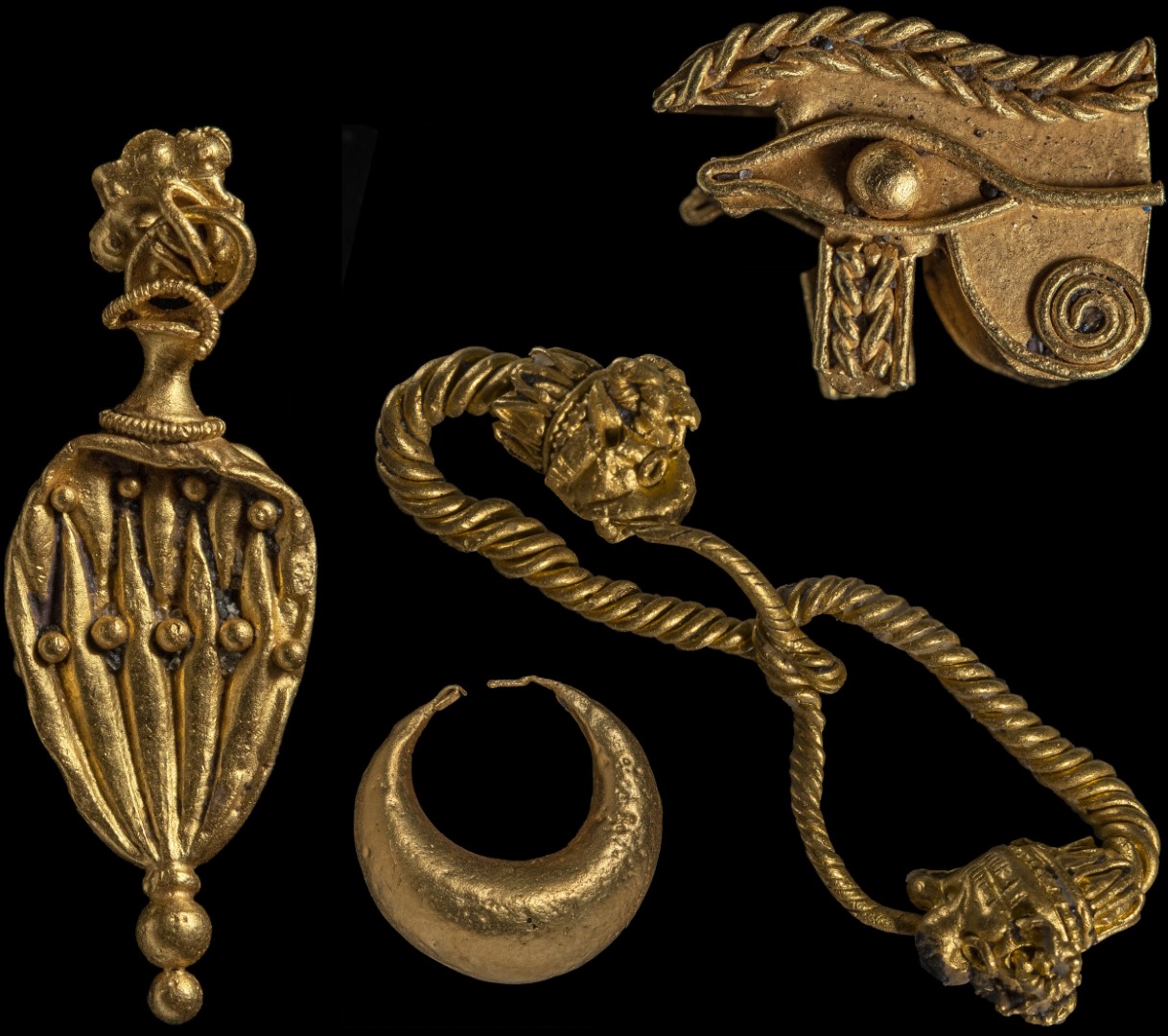
 práce snů
práce snů
In a sunken ancient city, they found a temple with treasure
Categories: Nálezy nejenom s detektorem kovů v mořích a oceanech
In the city of Thonis-Herakleion in the Abukir Bay near Alexandria, about 10 metres below sea level and 2.5 km from the coast, the remains of two temples were discovered - one dedicated to the Egyptian god Amon and the other to the Greek goddess Aphrodite. In the ruins of the Temple of Amon, gold and silver treasures from the time of the pharaohs were recently discovered.
The ruins of the sunken city were first discovered in 2000 by French archaeologist Franck Goddie. Since then, the research has been led by the non-profit European Institute for Underwater Archaeology (IEASM). Gradually, the bottom of the former Nile Canal and the walls of the Temple of Amon have been uncovered. The city was known as Herakleion, and one of the stelae of the sanctuary also bore its Egyptian name: Thonis. It was thus definitively confirmed that Herakleion and Thonis were not in fact two separate cities.
The city had been a major trading port between Greece and late Pharaonic Egypt since the 6th century BC. At its peak, it was the largest port city in the Mediterranean before it was eclipsed by Alexandria. Votive offerings of merchants and sailors have been found all over the local seabed, many with nautical motifs (miniature anchors, miniature ships).
This year, the team explored the city's southern channel, which, during a catastrophic event dating back to the middle of the second century BC, huge stone blocks from a great temple collapsed. It was the temple of the god Amun where the pharaohs came to receive titles of power from the supreme god of the ancient Egyptian pantheon.
The use of new geophysical technologies has revealed cavities and objects buried beneath layers of clay several metres thick. The surviving wooden beams and columns supporting the temple floors have been radiocarbon dated to the 5th century BC. The temple treasury yielded gold jewellery, silver tools, fragile alabaster vessels for perfumes or ointments and ritual royal objects intact.
East of the Temple of Amon, a Greek sanctuary dedicated to Aphrodite was discovered. Imported bronze and ceramic objects were found there. They prove that the Greeks had sanctuaries in the city for their own gods and rituals. Numerous finds of Greek weapons attest to the presence of Greek mercenaries. They defended access to the kingdom at the mouth of this branch of the Nile, which was the largest and most navigable in antiquity.
After the catastrophe of the 2nd century BC, Heracleion never regained its former importance, although it was still inhabited until the end of the 8th century. However, a series of earthquakes and rapidly rising sea levels gradually devastated the entire coastline. Eventually, the once important Nile Delta was completely submerged and the once important city of Thonis-Heracleion ended up below sea level.
Roman Nemec
Sources: ngenespanol.com, thehistoryblog.com, indipendent.co.uk, franckgoddio.org

Bronze bird-shaped vessel and pottery

wooden structure under the floor of the Temple of Amun

silver bowls and ceramic ritual vessel

votive hand on the seabed

Gold amulets and jewellery
The article is included in categories:



